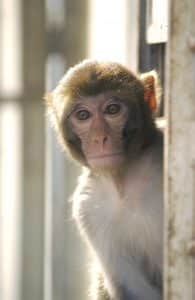Podcast: Play in new window | Download (Duration: 7:26 — 17.4MB)
Subscribe: Apple Podcasts | TuneIn | RSS | More

© Clem Spalding 210-271-7273
When you hear the phrase “natural history” – what comes to mind? A display at a museum? A college course? At Texas Biomed, natural history means a certain kind of study that tracks the course of an infectious disease
Associate Scientist Ricardo Carrion, Jr., Ph.D., serves as the Director of Maximum Containment Contract Research. He explains that documenting the course of a disease — in this case, Ebola virus –in a nonhuman primate helps make sure the monkey is a good and accurate model.

The FDA will use these animal models to evaluate experimental Ebola vaccines and therapeutics that come through the pipeline. The federal government characterizes Ebola as a high priority threat. That’s why money is being invested – to protect people – with either a vaccine or a therapeutic if the virus happened to come into the United States, as it did in 2014 when two nurses in Dallas contracted the disease from a patient with Ebola who traveled here from Africa. While most people in America don’t see Ebola as a threat, there is a chance the virus could be weaponized for a bioterrorism attack…or it could show up again in a visitor arriving from another country.
Texas Biomed competed for — and won — the grant to conduct these natural history studies, in part, because of its long and successful history working with high containment pathogens.